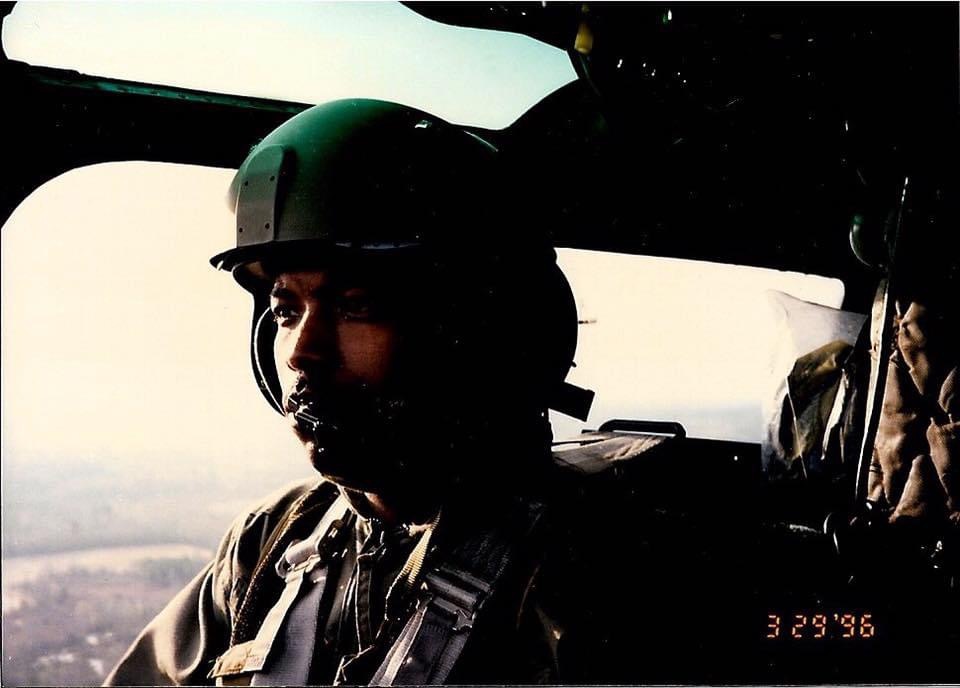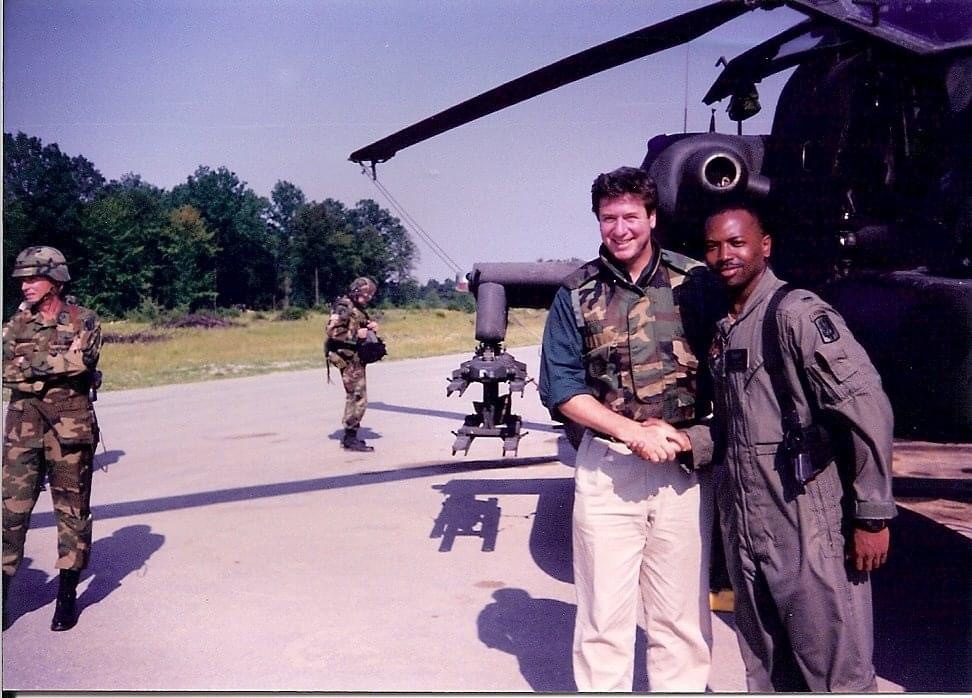The roar of the twin engines, the feel of the cyclic (or stick as non-helo pilots call it), and the complex dance of sensors and weaponry—that’s the life of an Apache helicopter pilot. It’s a world of precision, split-second decisions, and an unwavering commitment to mission success. As an Apache pilot turned marketing leader, I’ve found that the cockpit’s lessons are surprisingly applicable to the boardroom and the dynamic field of marketing.
I hope that as you read this, it will encourage you to give a second look the next time a veteran’s resume hits your inbox. Here’s how the experiences of flying an attack helicopter translate into steering a marketing team to success.
1. Mission Planning: Crafting a Strategic Marketing Plan
Every mission in the Apache starts with meticulous planning. Understanding the terrain, the objectives, the potential threats, and the resources available are all critical components of a successful operation. Similarly, in marketing, a solid strategic plan is the foundation of any successful campaign. This involves:
- Market Analysis: Just as we analyze enemy positions and terrain, marketers must understand the market landscape, customer needs, and competitive threats.
- Clear Objectives: Define what success looks like. In a mission, it could be neutralizing a threat or securing an area. In marketing, it could be increasing brand awareness or driving sales.
- Resource Allocation: Just as we allocate fuel, ammunition, and personnel, marketers must wisely use their budget, tools, and human resources.
2. Situational Awareness: Keeping a Pulse on the Market
Flying an Apache demands constant situational awareness. Pilots must monitor multiple systems, stay alert to potential threats, and adapt to rapidly changing conditions. In marketing, this translates to staying informed about industry trends, consumer behavior, and competitor actions. Tools like social listening platforms, market research, and analytics dashboards can help maintain this awareness.
- Real-Time Data: Leverage data to make informed decisions. An Apache pilot relies on real-time information from radar and sensors; marketers should use analytics to understand campaign performance and customer interactions.
- Flexibility: Be prepared to pivot. Just as a pilot may need to adjust a flight path, marketers should be agile, ready to adapt strategies based on new data or market shifts.
3. Leading by Example: Building a Cohesive Team
An Apache pilot is not a lone wolf; they are part of a tightly-knit team that includes co-pilots, ground crews, and support personnel. Success depends on seamless coordination and mutual trust. Leading a marketing team requires similar cohesion:
- Empowerment: Trust your team and empower them to make decisions. Just as a pilot trusts their co-pilot and crew, a marketing leader should delegate and support their team members.
- Communication: Foster open and clear communication. In the cockpit, communication is key to coordinating maneuvers and responding to threats. In marketing, regular check-ins, feedback loops, and transparent communication channels are essential.
- Training and Development: Invest in your team’s growth. Continuous training keeps an Apache crew sharp and ready; similarly, providing ongoing education and development opportunities keeps your marketing team at the cutting edge.
4. Risk Management: Navigating Challenges and Seizing Opportunities
Flying an Apache involves managing risks—whether from enemy fire or mechanical failure. In marketing, risks come in the form of market volatility, changing consumer preferences, or failed campaigns. Effective risk management involves:
- Proactive Planning: Identify potential risks early and develop contingency plans. Whether it’s an alternate landing zone or a backup marketing strategy, being prepared is key.
- Calculated Risks: Not all risks are bad. Some can lead to significant rewards. Just as a daring maneuver can save a mission, an innovative campaign can catapult a brand to new heights.
- Learning from Failure: When things go wrong, conduct a thorough debrief to understand what happened and how to improve. This is true in both combat missions and marketing campaigns.
Navigating challenges was never more evident than on a particular mission during which we were tasked to work with special operators tracking a certain high value target (HVT). When we took off, the weather was nice but took a turn for the worst. We flew into what I can only describe as “Scooby Doo fog”. I’m dating myself, but that’s fog so thick that Scooby Doo could cut out a doughnut and eat it! That level of fog required you to rely on your training to stem your fear.
Needless to say, the mission went on, and I witnessed my wingman settle into the fog to track this HVT. It was one of the gutsiest audibles I’ve ever seen called on a mission. His prior training and our mission planning ultimately allowed us to mitigate this risk and all to return to base safely after a successful mission.
5. Execution: Turning Strategy into Action
The best plans mean nothing without effective execution. In the Apache, this means flying the mission with precision, adapting to the unfolding situation, and making real-time decisions. In marketing, execution involves:
- Campaign Launch: Like taking off in an Apache, launching a marketing campaign requires confidence, precision, and coordination.
- Monitoring and Adjustment: Once in flight, constant monitoring is essential. Adjust strategies and tactics based on performance data, just as a pilot adjusts to weather and battlefield conditions.
- Measuring Success: Define clear metrics for success and evaluate the results. Conducting after-action reviews helps refine future missions and campaigns alike.
6. Debrief
The U.S. military embraces continuous improvement through a mission debriefing process. After each mission, the performance would be reviewed to validate success and to capture learnings. Through this process, things that are learned by one pilot become shared with the rest of the battalion. Best practices are adopted and the entire battalion becomes more effective (safer, more lethal, more impactful). In marketing, the key takeaways include:
- Campaign Post-Mortem: The team who worked on the campaign get together in a room or call to discuss the performance. Did we achieve our goals, and why? What went well, what could have gone better, what are we going to plan to do in our next campaign?
- For longer duration campaigns, include a mid-point review or 3-4 week check in.
- Review Benchmarks: Don’t settle for incremental improvement without understanding how your efforts stack up against industry benchmarks.
- Process Updates: Apply the learnings from the campaign post-mortems to the campaign process and document best practices.
From Cockpit to Boardroom: Navigating Success
The transition from Apache pilot to marketing leader might seem like a leap, but the core principles of mission planning, situational awareness, team leadership, risk management, and execution apply seamlessly to both roles. By adopting a pilot’s mindset, marketers can navigate the complex, fast-paced world of modern business with precision, agility, and unwavering focus on the mission at hand. So, gear up, trust your instruments, and lead your team to soar above the competition.
Lastly, I hope this blog post helps a few veterans or soon to be veterans who might be struggling to figure out how what we do as military leaders translates into the corporate world. GO ARMY!

Me and then Governor of VA George Allen (Bosnia, 1997)


4 ship mission somewhere over Bosnia 1997




